Uru
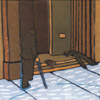 Swedish group Pallin has chosen a very difficult path for themselves inthe modern age of Swedish music. A market and genre that usuallyincludes fairly horrible bands with grating pop sensibilities has nouse for Pallin, who create guitar-and-strings-based simple compositionsthat are perfect background music for your Saturday afternoon fishingtrip. "A One Bedroom Apartment," then, is a decidedly quiet affair, butnot without moments of jarring efficiency. The first release I've heardby the band, this collection is assured, playful, yet not entirelystunning. The only thing I felt throughout my listening to this CD thattroubled me was the overwhelming feeling that I'd heard it all before,just by some other band. Some tracks were reminiscent of EricBachmann's work with Crooked Fingers and Barry Black, others soundedvaguely like structures on a gybe! record. But if you're going toremind people of other bands, you can't go wrong with those two. AndPallin rarely goes wrong. This music is soothing without pretense,gorgeous without effort, and memorable without complete originality. Itis a "yawner" in areas: the first moments of the title track left meclose to the longest sleep since Rip Van Winkle, and most tracks dotake a few moments to build to their true happy hunting ground.However, the musicians are confident in their abilities, and do holdcommand over their instruments. I haven't heard twang like this on mostcountry records of recent memory, and that's precisely where it shouldbe found. I could have done without the few moments of field recording,but, ultimately, it doesn't really matter by the final track, which isjust plain lovely while entirely too short. Easily my pick of the week.
Swedish group Pallin has chosen a very difficult path for themselves inthe modern age of Swedish music. A market and genre that usuallyincludes fairly horrible bands with grating pop sensibilities has nouse for Pallin, who create guitar-and-strings-based simple compositionsthat are perfect background music for your Saturday afternoon fishingtrip. "A One Bedroom Apartment," then, is a decidedly quiet affair, butnot without moments of jarring efficiency. The first release I've heardby the band, this collection is assured, playful, yet not entirelystunning. The only thing I felt throughout my listening to this CD thattroubled me was the overwhelming feeling that I'd heard it all before,just by some other band. Some tracks were reminiscent of EricBachmann's work with Crooked Fingers and Barry Black, others soundedvaguely like structures on a gybe! record. But if you're going toremind people of other bands, you can't go wrong with those two. AndPallin rarely goes wrong. This music is soothing without pretense,gorgeous without effort, and memorable without complete originality. Itis a "yawner" in areas: the first moments of the title track left meclose to the longest sleep since Rip Van Winkle, and most tracks dotake a few moments to build to their true happy hunting ground.However, the musicians are confident in their abilities, and do holdcommand over their instruments. I haven't heard twang like this on mostcountry records of recent memory, and that's precisely where it shouldbe found. I could have done without the few moments of field recording,but, ultimately, it doesn't really matter by the final track, which isjust plain lovely while entirely too short. Easily my pick of the week.
 Swedish group Pallin has chosen a very difficult path for themselves inthe modern age of Swedish music. A market and genre that usuallyincludes fairly horrible bands with grating pop sensibilities has nouse for Pallin, who create guitar-and-strings-based simple compositionsthat are perfect background music for your Saturday afternoon fishingtrip. "A One Bedroom Apartment," then, is a decidedly quiet affair, butnot without moments of jarring efficiency. The first release I've heardby the band, this collection is assured, playful, yet not entirelystunning. The only thing I felt throughout my listening to this CD thattroubled me was the overwhelming feeling that I'd heard it all before,just by some other band. Some tracks were reminiscent of EricBachmann's work with Crooked Fingers and Barry Black, others soundedvaguely like structures on a gybe! record. But if you're going toremind people of other bands, you can't go wrong with those two. AndPallin rarely goes wrong. This music is soothing without pretense,gorgeous without effort, and memorable without complete originality. Itis a "yawner" in areas: the first moments of the title track left meclose to the longest sleep since Rip Van Winkle, and most tracks dotake a few moments to build to their true happy hunting ground.However, the musicians are confident in their abilities, and do holdcommand over their instruments. I haven't heard twang like this on mostcountry records of recent memory, and that's precisely where it shouldbe found. I could have done without the few moments of field recording,but, ultimately, it doesn't really matter by the final track, which isjust plain lovely while entirely too short. Easily my pick of the week.
Swedish group Pallin has chosen a very difficult path for themselves inthe modern age of Swedish music. A market and genre that usuallyincludes fairly horrible bands with grating pop sensibilities has nouse for Pallin, who create guitar-and-strings-based simple compositionsthat are perfect background music for your Saturday afternoon fishingtrip. "A One Bedroom Apartment," then, is a decidedly quiet affair, butnot without moments of jarring efficiency. The first release I've heardby the band, this collection is assured, playful, yet not entirelystunning. The only thing I felt throughout my listening to this CD thattroubled me was the overwhelming feeling that I'd heard it all before,just by some other band. Some tracks were reminiscent of EricBachmann's work with Crooked Fingers and Barry Black, others soundedvaguely like structures on a gybe! record. But if you're going toremind people of other bands, you can't go wrong with those two. AndPallin rarely goes wrong. This music is soothing without pretense,gorgeous without effort, and memorable without complete originality. Itis a "yawner" in areas: the first moments of the title track left meclose to the longest sleep since Rip Van Winkle, and most tracks dotake a few moments to build to their true happy hunting ground.However, the musicians are confident in their abilities, and do holdcommand over their instruments. I haven't heard twang like this on mostcountry records of recent memory, and that's precisely where it shouldbe found. I could have done without the few moments of field recording,but, ultimately, it doesn't really matter by the final track, which isjust plain lovely while entirely too short. Easily my pick of the week.
samples:


 Anytime I read about a band that creates "post-rock soundscapes" thesedays, I tend to cringe. It's a pretty generic term that usually implies"Try this next time you have trouble sleeping." Long, drawn-out,sprawling epics that top the ten minute mark are also not unheard ofwith this description. Nevertheless, sometimes a band slips throughthat fine veil of half mediocrity/half meandering to create somebeautiful music. On previous records, both artists involved on "PassingSong" have created music that suggests they are capable of breakingthrough, but need more time to develop. Working together on thisrelease hasn't helped them one bit: they're still both stuck in thatrealm. This release isworth listening to, but I doubt you'll take anything away from it thatwill change your life. It is what it is: simple song structures with acapable voice attached that ultimately go nowhere new or special. Theydon't touch a nerve. They don't even scratch the surface of the skin.They hang there, in the air, waiting for that defining moment that willseparate the wheat from the chaff. And it never comes. Having saidthat, a few of the tracks do have incredible potential, and I see somegreat things coming from this pairing down the road. The opening track,'Only When You Sleep', smolders in its languid drawl, and the justplain scary 'Snow Sunrise' purports to decimate us all even though itnever manages to. A good set by two powerful creative forces thatdeserve more notice. Maybe with another set like this one, they willget it.
Anytime I read about a band that creates "post-rock soundscapes" thesedays, I tend to cringe. It's a pretty generic term that usually implies"Try this next time you have trouble sleeping." Long, drawn-out,sprawling epics that top the ten minute mark are also not unheard ofwith this description. Nevertheless, sometimes a band slips throughthat fine veil of half mediocrity/half meandering to create somebeautiful music. On previous records, both artists involved on "PassingSong" have created music that suggests they are capable of breakingthrough, but need more time to develop. Working together on thisrelease hasn't helped them one bit: they're still both stuck in thatrealm. This release isworth listening to, but I doubt you'll take anything away from it thatwill change your life. It is what it is: simple song structures with acapable voice attached that ultimately go nowhere new or special. Theydon't touch a nerve. They don't even scratch the surface of the skin.They hang there, in the air, waiting for that defining moment that willseparate the wheat from the chaff. And it never comes. Having saidthat, a few of the tracks do have incredible potential, and I see somegreat things coming from this pairing down the road. The opening track,'Only When You Sleep', smolders in its languid drawl, and the justplain scary 'Snow Sunrise' purports to decimate us all even though itnever manages to. A good set by two powerful creative forces thatdeserve more notice. Maybe with another set like this one, they willget it.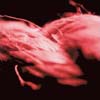 'Imagination of Rhythm' and 'Unknown Source of Egoism' are not exactlyfavorable track titles for a band's debut release. And given what themembers of Rope have been through, it almost seems like high time foranother slap in the face to go with their hardships. "Fever" wasrecorded in 2000 in the band's native Poland, after which they sold alltheir belongings and moved to America. Land of opportunity or not,America may not be quite ready for Rope. Slow to build, almostcacaphonous in places, and even a little bit irritating, their music isthat of an unskilled child: unsure, monotonous, repetitive and amateur.It's not altogether unpleasing, though. As first recordings go, "Fever"is pretty good. You can definitely hear the influences on their music,and you can tell that they're searching for that sound of their own.It's all pretty eerie, as each track jars and thumps, but soars withsharp sounds, escalating towards God knows what. 'Liquid Courage' isactually the most complete track, and the most calm for the first 3minutes or so. Then it descends into the same noise that mars the othertracks. Fortunately, there is room for improvement. Since Chris Drazekand Robert Iwanik are now living in Chicago, they'll have plenty tohear that will affect their pallette. I predict the next Rope recordwill sound nothing like this. And I look forward to hearing it. Thisone was just a bit too much for me.
'Imagination of Rhythm' and 'Unknown Source of Egoism' are not exactlyfavorable track titles for a band's debut release. And given what themembers of Rope have been through, it almost seems like high time foranother slap in the face to go with their hardships. "Fever" wasrecorded in 2000 in the band's native Poland, after which they sold alltheir belongings and moved to America. Land of opportunity or not,America may not be quite ready for Rope. Slow to build, almostcacaphonous in places, and even a little bit irritating, their music isthat of an unskilled child: unsure, monotonous, repetitive and amateur.It's not altogether unpleasing, though. As first recordings go, "Fever"is pretty good. You can definitely hear the influences on their music,and you can tell that they're searching for that sound of their own.It's all pretty eerie, as each track jars and thumps, but soars withsharp sounds, escalating towards God knows what. 'Liquid Courage' isactually the most complete track, and the most calm for the first 3minutes or so. Then it descends into the same noise that mars the othertracks. Fortunately, there is room for improvement. Since Chris Drazekand Robert Iwanik are now living in Chicago, they'll have plenty tohear that will affect their pallette. I predict the next Rope recordwill sound nothing like this. And I look forward to hearing it. Thisone was just a bit too much for me. Steinbrüchel zooms in from Zurich weaving unique cyclical digitalhisscapes. On this 3" CD he repeatedly unwinds a coiled wire ofimmersive hi-tone ambience in exponentially swelling chunks. Betweeneach are short silent gaps which have been given their own track ID.The first track is seconds of silence and each odd numbered track lopsa couple of seconds off its silent spell. Each time round more isrevealed, until track 18 the full eight minute masterpiece unfurls.This might seem a bit of a pointlessly conceptual approach, but itworks brilliantly, as each new track paints in a little more detail.About halfway through it's evolution, a bass drone undertow bolstersthe meticulous circling scatter-glitch'n'sinewave. Steinbrüchel israising the stakes for anyone trying their hand at 21st century ambientcomputer music, and my powers of description seem utterly inadequte toconvey the mysterious alien beauty of 'zwischen.raum.' The shortduration of the 3" disc works in his favour, leaving me curious to hearmore. This CD will probably appeal to those who enjoy the fine honedtones of Fennesz, Thomas Köner, Ryoji Ikeda, Mika Vainio and OrenAmbarchi. Words are not much use here, I've been trying and failing forweeks now to do this CD justice. Just try the sound samples.
Steinbrüchel zooms in from Zurich weaving unique cyclical digitalhisscapes. On this 3" CD he repeatedly unwinds a coiled wire ofimmersive hi-tone ambience in exponentially swelling chunks. Betweeneach are short silent gaps which have been given their own track ID.The first track is seconds of silence and each odd numbered track lopsa couple of seconds off its silent spell. Each time round more isrevealed, until track 18 the full eight minute masterpiece unfurls.This might seem a bit of a pointlessly conceptual approach, but itworks brilliantly, as each new track paints in a little more detail.About halfway through it's evolution, a bass drone undertow bolstersthe meticulous circling scatter-glitch'n'sinewave. Steinbrüchel israising the stakes for anyone trying their hand at 21st century ambientcomputer music, and my powers of description seem utterly inadequte toconvey the mysterious alien beauty of 'zwischen.raum.' The shortduration of the 3" disc works in his favour, leaving me curious to hearmore. This CD will probably appeal to those who enjoy the fine honedtones of Fennesz, Thomas Köner, Ryoji Ikeda, Mika Vainio and OrenAmbarchi. Words are not much use here, I've been trying and failing forweeks now to do this CD justice. Just try the sound samples. VOE is the new project of Paul Browse (ex-Clock DVA, T.A.G.C.) withNirto Karsten Fischer, composer and producer of successful commercialfilm scores and modern choreographies. Therefore, it's not toosurprising that the whole album leaves me with the impression of havinglistened to a soundtrack. The songs mostly flow into each other but thename Visions of Excess could be misleading, as the trance,techno-resemblant mood more closely resembles Clock DVA's 'BuriedDreams' phase. The rhythms are updated breakbeats, but the generalfeeling of an urban late night / early morning Metropolis is evoked bymetallic edged electronic sounds with loads of delay, reverb and anoccasional isolated human voice lost in a cyberspace wasteland (aseemingly stylistic trademark unexclusive to Adi Newton). If you'venever been into DVA you might remember the much over-hypeddrum-and-bass act Photek (where is he now?) and his first releases, ifnot try the samples. A special guest featured in three tracks (amongthem, "Transvaluation") is Robert Anton Wilson who met VOE in theirstudio. But sadly only a few snippets appear, not a whole reading likewhen Paul Browse's early 90's project System O1 featured Dr. TimothyLeary. Paul Browse himself takes over vocals successfully on four othertracks including, "The Hibernation Man" most notably. I've got somewhatmixed emotions about this album as I do like the style and the moodhere a lot, but I actually had hoped for something more well-developedand can't get rid of the feeling they're playing more safe thanneccessary.
VOE is the new project of Paul Browse (ex-Clock DVA, T.A.G.C.) withNirto Karsten Fischer, composer and producer of successful commercialfilm scores and modern choreographies. Therefore, it's not toosurprising that the whole album leaves me with the impression of havinglistened to a soundtrack. The songs mostly flow into each other but thename Visions of Excess could be misleading, as the trance,techno-resemblant mood more closely resembles Clock DVA's 'BuriedDreams' phase. The rhythms are updated breakbeats, but the generalfeeling of an urban late night / early morning Metropolis is evoked bymetallic edged electronic sounds with loads of delay, reverb and anoccasional isolated human voice lost in a cyberspace wasteland (aseemingly stylistic trademark unexclusive to Adi Newton). If you'venever been into DVA you might remember the much over-hypeddrum-and-bass act Photek (where is he now?) and his first releases, ifnot try the samples. A special guest featured in three tracks (amongthem, "Transvaluation") is Robert Anton Wilson who met VOE in theirstudio. But sadly only a few snippets appear, not a whole reading likewhen Paul Browse's early 90's project System O1 featured Dr. TimothyLeary. Paul Browse himself takes over vocals successfully on four othertracks including, "The Hibernation Man" most notably. I've got somewhatmixed emotions about this album as I do like the style and the moodhere a lot, but I actually had hoped for something more well-developedand can't get rid of the feeling they're playing more safe thanneccessary.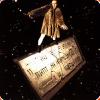 Queen Elizabeth is Julian Cope and Thighpaulsandra's ongoing "sonic ritual" project. Birthed in 1993, the first album was released in 1994 and the second double album, newly reissued, in 1997. Well over three hours of improvised music is spread over the three discs, the "shortest" of the seven tracks being thirteen minutes. As one might expect from these two space cadets, languid analog ambience (or "Ambulence" as Cope refers to it) via Mellotrons, Moogs and ARPs is the primary mode of space-time travel here, though percussion, guitars and miscellany also play a part.
Queen Elizabeth is Julian Cope and Thighpaulsandra's ongoing "sonic ritual" project. Birthed in 1993, the first album was released in 1994 and the second double album, newly reissued, in 1997. Well over three hours of improvised music is spread over the three discs, the "shortest" of the seven tracks being thirteen minutes. As one might expect from these two space cadets, languid analog ambience (or "Ambulence" as Cope refers to it) via Mellotrons, Moogs and ARPs is the primary mode of space-time travel here, though percussion, guitars and miscellany also play a part.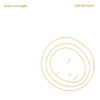 H.S. Ziegler began flooding the German underground scene withself-released home-produced cassettes in the 1980s. Particularlyannoying naive and dada-esque, he used every style and toy instrumenthe could get hold of to develope his ways of expression. Throughout the1990s, he released a wide variety of stuff in nearly any possibleformat on a wide selection of independent labels, teamed up with Blummfor more than 3 CDs and making regular guest appearances on Mouse OnMars releases, starting with 'Iaora Tahiti'.
H.S. Ziegler began flooding the German underground scene withself-released home-produced cassettes in the 1980s. Particularlyannoying naive and dada-esque, he used every style and toy instrumenthe could get hold of to develope his ways of expression. Throughout the1990s, he released a wide variety of stuff in nearly any possibleformat on a wide selection of independent labels, teamed up with Blummfor more than 3 CDs and making regular guest appearances on Mouse OnMars releases, starting with 'Iaora Tahiti'.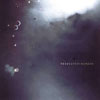 Randall Nieman cut his teeth in the Michigan space-rock scene playingwith Windy & Carl (then a quartet). Moving on to start a newproject, F?xa, with former Asha Vida member Ryan Anderson, Nieman wasable to fully explore the electronic counterpart to his interests, inaddition to guitar and bass work. Although Anderson his since departed,Nieman has continued with rather prolific output ('Supercharged' marksthe sixth full-length release). The array of instrumentation on thisalbum is all in dreamy hints and touches. The theremin, Moog and synthsnever overpower the guitar, bass and drums, or vice versa. Less trippythan previous efforts like 'Very Well Organized' and less airy than '3Field Rotation', 'Supercharged' draws from both styles, but infusesthem with darker, milder overtones. The first of the eight tracks,"Hide Away" is a prime example. Smoky and magnetic, this song featuresassistance from The Telescopes'/Unisex's Jo Doran and Stephan Lawrie,who lend their low, sparse vocals (something new to F?xa's mostlyinstrumental repetoire), which are submerged into the waftingelectronics. Then, later moving on in a different direction, the thirdtrack "420" is distorted and noisy. 'Supercharged' has a lot ofvariety, but still manages to retain a sense of balance, and is verypolished and even. "It Was You" is another outstanding track,highlighting Nieman's skill for handling analog electronics as well asthat of drummer Drew Peters (another figure in the burgeoning Michiganscene). The result is simple and charming. Unfortunately, thecharismatic beginning of the album just doesn't follow through to theend: "The Formula", "We Could Be Together" and "In Your Dreams" arepretty and quaint, but become difficult to distinguish after the albumreaches its midpoint and lack the character of the songs which preceedthem. That said, I still wouldn't hesitate to recommend 'Supercharged'to fans of F?xa's previous work or anyone who has an appreciation forthoughtful, introspective instrumental music, such as The Album Leaf(on whom F?xa are clearly an influence). Plus, the sublime artwork byMartin Andersen (ex-v23) is an excellent bonus.
Randall Nieman cut his teeth in the Michigan space-rock scene playingwith Windy & Carl (then a quartet). Moving on to start a newproject, F?xa, with former Asha Vida member Ryan Anderson, Nieman wasable to fully explore the electronic counterpart to his interests, inaddition to guitar and bass work. Although Anderson his since departed,Nieman has continued with rather prolific output ('Supercharged' marksthe sixth full-length release). The array of instrumentation on thisalbum is all in dreamy hints and touches. The theremin, Moog and synthsnever overpower the guitar, bass and drums, or vice versa. Less trippythan previous efforts like 'Very Well Organized' and less airy than '3Field Rotation', 'Supercharged' draws from both styles, but infusesthem with darker, milder overtones. The first of the eight tracks,"Hide Away" is a prime example. Smoky and magnetic, this song featuresassistance from The Telescopes'/Unisex's Jo Doran and Stephan Lawrie,who lend their low, sparse vocals (something new to F?xa's mostlyinstrumental repetoire), which are submerged into the waftingelectronics. Then, later moving on in a different direction, the thirdtrack "420" is distorted and noisy. 'Supercharged' has a lot ofvariety, but still manages to retain a sense of balance, and is verypolished and even. "It Was You" is another outstanding track,highlighting Nieman's skill for handling analog electronics as well asthat of drummer Drew Peters (another figure in the burgeoning Michiganscene). The result is simple and charming. Unfortunately, thecharismatic beginning of the album just doesn't follow through to theend: "The Formula", "We Could Be Together" and "In Your Dreams" arepretty and quaint, but become difficult to distinguish after the albumreaches its midpoint and lack the character of the songs which preceedthem. That said, I still wouldn't hesitate to recommend 'Supercharged'to fans of F?xa's previous work or anyone who has an appreciation forthoughtful, introspective instrumental music, such as The Album Leaf(on whom F?xa are clearly an influence). Plus, the sublime artwork byMartin Andersen (ex-v23) is an excellent bonus.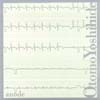 Anyone who mourned the passing of Otomo Yoshihide's incendiaryplunderphonic rock improv explosion Ground Zero should give 'Anode' ablast now! The opening and closing highly percussive attacks arecomparable to the middle section of Ground Zero's 'Last Concert'recording, where the duelling drums let fly, however these are morechaotic and loose, multi-layered and free. Perhaps this is no surpriseconsidering Ground Zero demolition drummers Uemura Masahiro andYoshigaki Yasuhiro are once more punishing the skins. 'Anode' wasimprovised under the conditions that the twelve musicicans do notrespond to each other, do not plot an obvious course and do not playregular rhythms or melodies. The ten and sixteen minute variations of"Anode 1" are as raucous and cacophanous as you might expect, but arealso more uplifting and joyful than anything I've heard all year. Sixpercussionists skitter and tumble thunderously foot over head as sinewaves wail, an empty turntable buzzes and electric guitar feedbacksings dissonant voids. Sandwiched between are two calm and reflectiverealisations of the 'Anode' game, which nod to John Cage's aleatorycomposition. "Anode 2" is the calm after the storm, as slow randomtrickles bounce off each other in curious lines. It segues neatly into"Anode 3" on which Nishi Yoko's prepared 17-string koto looms into theforeground pursuing a more climactic feel. Familiar names from theJapanorama tour such as guitarist Sugimoto Taku, sine waver Sachiko Mand percussionist Furuta Mari are on board, and in Liverpool a fourplayer version of "Anode 1" was the highlight. Otomo Yoshihide hasreleased a mind boggling number of CDs, usually of very high qualityand originality but some more essential than others. Alongside theI.S.O. CDs, this is the most assured and fascinating he's sounded sincethe demise of Ground Zero in 1998. Half of it's Otomo and friends attheir noisiest, and few kick up such a glorious racket.
Anyone who mourned the passing of Otomo Yoshihide's incendiaryplunderphonic rock improv explosion Ground Zero should give 'Anode' ablast now! The opening and closing highly percussive attacks arecomparable to the middle section of Ground Zero's 'Last Concert'recording, where the duelling drums let fly, however these are morechaotic and loose, multi-layered and free. Perhaps this is no surpriseconsidering Ground Zero demolition drummers Uemura Masahiro andYoshigaki Yasuhiro are once more punishing the skins. 'Anode' wasimprovised under the conditions that the twelve musicicans do notrespond to each other, do not plot an obvious course and do not playregular rhythms or melodies. The ten and sixteen minute variations of"Anode 1" are as raucous and cacophanous as you might expect, but arealso more uplifting and joyful than anything I've heard all year. Sixpercussionists skitter and tumble thunderously foot over head as sinewaves wail, an empty turntable buzzes and electric guitar feedbacksings dissonant voids. Sandwiched between are two calm and reflectiverealisations of the 'Anode' game, which nod to John Cage's aleatorycomposition. "Anode 2" is the calm after the storm, as slow randomtrickles bounce off each other in curious lines. It segues neatly into"Anode 3" on which Nishi Yoko's prepared 17-string koto looms into theforeground pursuing a more climactic feel. Familiar names from theJapanorama tour such as guitarist Sugimoto Taku, sine waver Sachiko Mand percussionist Furuta Mari are on board, and in Liverpool a fourplayer version of "Anode 1" was the highlight. Otomo Yoshihide hasreleased a mind boggling number of CDs, usually of very high qualityand originality but some more essential than others. Alongside theI.S.O. CDs, this is the most assured and fascinating he's sounded sincethe demise of Ground Zero in 1998. Half of it's Otomo and friends attheir noisiest, and few kick up such a glorious racket.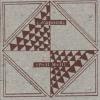 'Pell mell' means "in mingled confusion or disorder", a prettybefitting title for this unnecessarily full priced (maybe it's due tothe hand made, compressed paper digipak?) mini album. The disc iscomprised of just two tracks, under 20 and over eight minutes apiece,respectively. With these pieces Robin Storey explores contrastingprocesses. "Trace Area" begins with a mild drone loop which is thenaltered on the fly as additional layers are applied and peeled away. Ittakes a good eight minutes for something really interesting to takeshape - a deep, distant, meditational bass pulse jarred by percussiveracket - but it unfortunately regresses soon after. Near the end of thetrack, effected broadcast voices are tacked on as an afterthought.Compared to the bulk of Storey's work as Rapoon, "Trace" is the closestof these two to the "typical" Rapoon sound. "Pulse Codec" is much morerigid as a programmed rhythm provides the framework for electronicsounds. The beat is rather generic and off-putting right from thestart. Pretty stereo panned piano notes bounce around inside the frame,but the damn drum machine relentlessly overpowers everything else,including your concentration. 'Pell Mell' is the most disappointingRapoon disc I've encountered to date. At least half a dozen newStorey/Rapoon releases are on the horizon from Soleilmoon andKlanggalerie, including collaborations with Victor Nubla (Macromassa)and Andy Diey (Black Faction).
'Pell mell' means "in mingled confusion or disorder", a prettybefitting title for this unnecessarily full priced (maybe it's due tothe hand made, compressed paper digipak?) mini album. The disc iscomprised of just two tracks, under 20 and over eight minutes apiece,respectively. With these pieces Robin Storey explores contrastingprocesses. "Trace Area" begins with a mild drone loop which is thenaltered on the fly as additional layers are applied and peeled away. Ittakes a good eight minutes for something really interesting to takeshape - a deep, distant, meditational bass pulse jarred by percussiveracket - but it unfortunately regresses soon after. Near the end of thetrack, effected broadcast voices are tacked on as an afterthought.Compared to the bulk of Storey's work as Rapoon, "Trace" is the closestof these two to the "typical" Rapoon sound. "Pulse Codec" is much morerigid as a programmed rhythm provides the framework for electronicsounds. The beat is rather generic and off-putting right from thestart. Pretty stereo panned piano notes bounce around inside the frame,but the damn drum machine relentlessly overpowers everything else,including your concentration. 'Pell Mell' is the most disappointingRapoon disc I've encountered to date. At least half a dozen newStorey/Rapoon releases are on the horizon from Soleilmoon andKlanggalerie, including collaborations with Victor Nubla (Macromassa)and Andy Diey (Black Faction).
